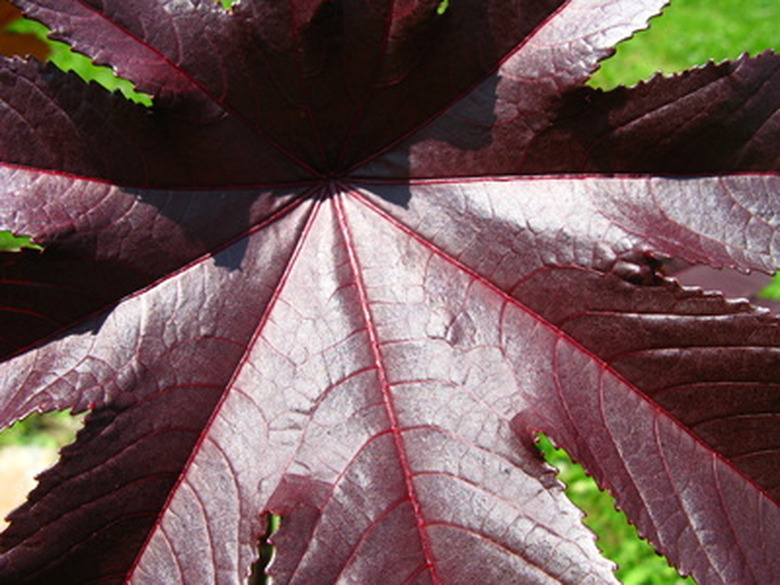How To Preserve Leaves In Glycerin
Things Needed
- Sharp knife or pruning shears
- Plastic bags
- Hammer
- 1-qt. wax-coated paper milk carton
- Cooling rack
- Old pantyhose
- Glass container
Glycerin can be used to preserve leaves on their stems in a softer, natural-looking state for many years. The technique typically renders items more pliable than other methods of preservation, and is appropriate for most types of deciduous foliage. It also works very well for evergreens. Use glycerin preservation to add dimension to your arrangements. This method will give your leaves a puffy, inflated appearance similar to that of a quilt.
Step 1
Harvest deciduous leaves and stems in the morning between late June and mid-September. This is the only time of the year that deciduous foliage can absorb the glycerin solution. Collect evergreen material anytime throughout the year. Pick your foliage when it's dry, as it will be easier to handle.
- Glycerin can be used to preserve leaves on their stems in a softer, natural-looking state for many years.
- Pick your foliage when it's dry, as it will be easier to handle.
Step 2
Use a sharp knife or pruning shears to cut branches or stems at least 4 to 6 inches longer than the finished product will be. Periodically stop harvesting to put collected plant materials in plastic bags and set them in the shade, to minimize wilting.
Step 3
Inspect the stem and its leaves carefully. Remove any damaged or diseased materials. These imperfections are accentuated by glycerinizing. Wound the stems so that they'll be able to absorb the thick glycerin solution: Split the lower 1 to 2 inches of smaller stems with a knife, or use a hammer to crush the lower 3 or 4 inches of thick, tough woody branches. Place the wounded stems in a glass of water to sit at room temperature overnight.
- Use a sharp knife or pruning shears to cut branches or stems at least 4 to 6 inches longer than the finished product will be.
Step 4
Combine 2 parts water with 1 part glycerin in a saucepan. You'll need enough finished solution to completely cover the wounded ends of the stems in a container. Heat over medium to 150 to 180 degrees F, stirring constantly to combine well. Do not boil. Remove from the heat and cool to about 100 F.
Step 5
Place the stems in a clean, repurposed 1-qt. wax-coated paper milk carton. Pour enough glycerin solution into the carton to cover the wounded portions of the stems. Set the container in a spot out of direct sun at room temperature where it will be out of your way.
- Combine 2 parts water with 1 part glycerin in a saucepan.
- Pour enough glycerin solution into the carton to cover the wounded portions of the stems.
Step 6
Monitor the progress of your glycerin preservation each day. Look closely at the veins in the leaves. They'll appear noticeably brown wherever glycerin has been taken up into them. Depending upon the variety of plant material, the preservation process can take anywhere from 2 to 6 weeks to complete.
Step 7
Check the glycerin solution's level daily. Add water as needed to maintain the original volume.
Step 8
Remove the stems from the glycerin solution as soon as the veins in the leaves are completely filled to their tips with it. Extending their stay will result in glycerin leaking from the foliage, resulting in mold.
- Monitor the progress of your glycerin preservation each day.
- Depending upon the variety of plant material, the preservation process can take anywhere from 2 to 6 weeks to complete.
Step 9
Spread the glycerinized materials out to drain in a single layer on cooling racks for about 24 hours before using in your arrangements. Cut stems to desired lengths.
Step 10
Strain used glycerin preservative through a piece of old pantyhose. Refrigerate in a tightly-capped glass container indefinitely for future use. The solution turns brown once it's been used, but that doesn't affect its performance. It can be recycled over and over again.
Tip
Add a few drops of food coloring to the glycerin solution for interesting effects.
